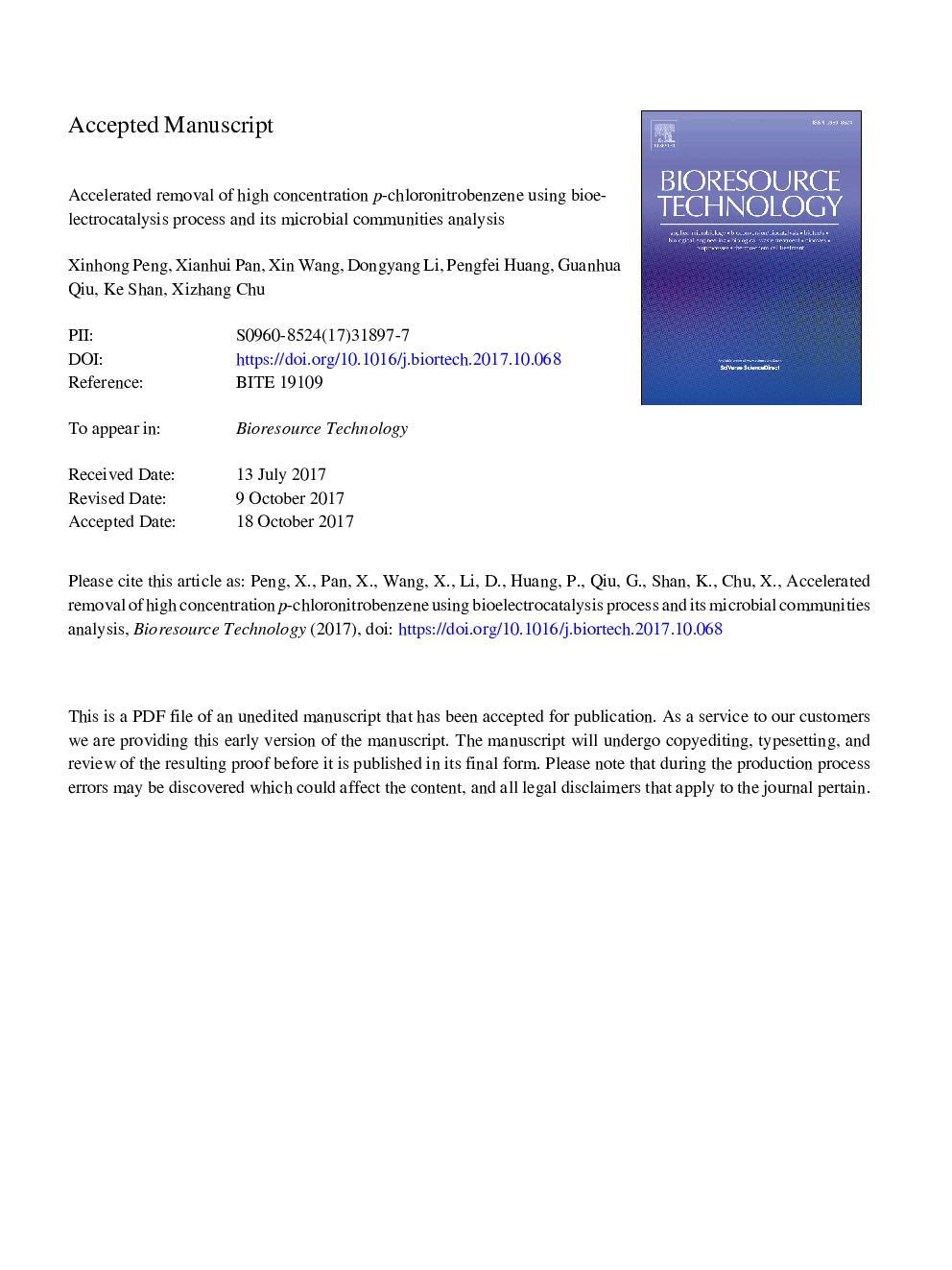| Article ID | Journal | Published Year | Pages | File Type |
|---|---|---|---|---|
| 7068824 | Bioresource Technology | 2018 | 34 Pages |
Abstract
p-Chloronitrobenzene (p-CNB) is a persistent refractory and toxic pollutant with a concentration up to 200â¯mg/L in industrial wastewater. Here, a super-fast removal rate was found at 0.2-0.8â¯V of external voltage over a p-CNB concentration of 40-120â¯mg/L when a bioelectrochemical technology is used comparing to the natural biodegradation and electrochemical methods. The reduction kinetics (k) was fitted well according to pseudo-first order model with respect to the different initial concentration, indicating a 1.12-fold decrease from 1.80 to 0.85â¯hâ1 within the experimental range. Meanwhile, the highest k was provided at 0.5â¯V with the characteristic of energy saving. It was revealed that the functional bacterial (Propionimicrobium, Desulfovibrio, Halanaerobium, Desulfobacterales) was selectively enriched under electro-stimulation, which possibly processed Cl-substituted nitro-aromatics reduction. The possible degradation pathway was also proposed. This work provides the beneficial choice on the rapid treatment of high-concentration p-CNB wastewater.
Related Topics
Physical Sciences and Engineering
Chemical Engineering
Process Chemistry and Technology
Authors
Xinhong Peng, Xianhui Pan, Xin Wang, Dongyang Li, Pengfei Huang, Guanhua Qiu, Ke Shan, Xizhang Chu,
